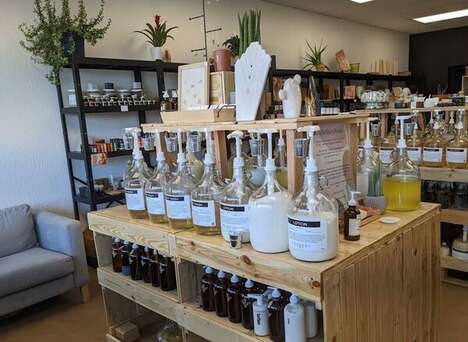Innovating the Everyday: Household Essentials Reimagined
An Interview with Noman Shamim, the Senior Manager of Customer Marketing & eCommerce at Irving Consumer Products
 In the world of household essentials, where innovation might seem as elusive as a perfectly folded fitted sheet, Noman Shamim is proving that even the most mundane products can be at the cutting edge of consumer trends. As the Senior Manager of Customer Marketing & eCommerce at Irving Consumer Products, Shamim is turning paper products into paragons of progress. From carbon-neutral tissues to revolutionary retail strategies, he's showing that true innovation isn't just about flashy new gadgets—it's about transforming the products we use every day. In this conversation, we unfold the layers of innovation in an industry where softness meets sustainability, and efficiency is the name of the game.
In the world of household essentials, where innovation might seem as elusive as a perfectly folded fitted sheet, Noman Shamim is proving that even the most mundane products can be at the cutting edge of consumer trends. As the Senior Manager of Customer Marketing & eCommerce at Irving Consumer Products, Shamim is turning paper products into paragons of progress. From carbon-neutral tissues to revolutionary retail strategies, he's showing that true innovation isn't just about flashy new gadgets—it's about transforming the products we use every day. In this conversation, we unfold the layers of innovation in an industry where softness meets sustainability, and efficiency is the name of the game.1. Tell us your name and a little bit about your role at Irving Consumer Products.
This is Noman Shamim, senior consumer marketing manager for Irving Consumer Products. We're a household essentials and household paper manufacturing organization.
2. How are you enjoying Future Festival?
This is really great. First of all, I got to learn a lot of new ideas. I got to meet a lot of interesting people. I learned what Trend Hunter is doing. So Future Festival has been great.
3. Who's been your favorite keynote speaker so far?
So far, it was Jeremy Gutsche. He talked about many things that are directly related to what I do, as did Zahra, who talked about how AI impacts marketing.
4. What do you think your biggest takeaway has been?
My biggest takeaway is basically from the first keynote, which was, "If you are two years behind, you are decades behind." And I relate to that statement.
5. What does innovation mean to you?
In the context of what we do at Irving, innovation means becoming more efficient, driving things faster, and delivering our core benefit quicker in a much easier way to our own shoppers. For an actual product that's low engagement and does not have a lot of differentiation, that would be our concept of innovation.
6. How does your team generate new ideas?
There are several places where we do that. We have off-sites, we have ongoing research insights, and we do our own trends research. We have a research and insights team that collects all this data. We have an innovation department that focuses on this directly as well. It's not a one-dimensional process. It's multifaceted. There are multiple things going into it, so it's not linear by any chance.
7. How do you identify trends? What resources does your team use to spot trends and consumer insights?
We actually subscribe to several such resources. We subscribe to things like consumer panels through Numerator. We do our own desktop search as well. It relates to basically what we're looking at, whether it's e-commerce trends, social media trends, or trends in evaluation. It varies significantly. However, as an organization, this is pretty important to us because we partner with many leading retailers. So, we invest a lot of time, effort, energy, and dollars into that.
8. What is the biggest challenge you face when innovating?
The biggest challenge is incorporating innovation into the culture and the process of the organization. Innovation is not a one-and-done process. It's an ongoing system of how you create an idea, bring it to life, make it part of your daily organization, and make it part of the process. It's not as simple as clicking a button.
9. Has there ever been an instance where another industry has influenced an innovation at Irving Consumer Products?
Not industry-wise, but as a consumer trend. Royale, the company that I work for, is the only carbon-neutral tissue that is available in Canada or being sold in Canada. That was not really an inspiration from competition. That was an inspiration from shopper trends, from what people are finding important. We went into it, and it's a legal certification. We've invested a lot of time and energy, and there's a whole team that manages it. That's the most recent inspiration that we had, which we made into an actual offering.
10. What makes an innovative culture? How do you create a culture of innovation?
It's an innovative culture. Anything influencing an organizational culture has to be long-term and it has to be part of the value that your employees and team bring to the office. It's not just a presentation, it's not just a one-and-done, but it's an ongoing system and it's not owned by any one team or department. It's an organization that has to adopt it as a core value.
Understanding that innovation doesn't mean that every year, you're bringing on a new product. Innovation can tell you are making a new way of doing things. It could be packaging, it could be a way of communication. To make it part of an organization, you really have to work together and make it an ongoing process, ensuring that it's not pigeonholed into one individual team or anybody. It's something that's a shared experience.
11. Looking to the future, how will Irving Consumer Products continue to be a leader in innovation?
It goes back to the previous question about making it part of the culture or the system or the process in which your company works. Becoming an innovative organization means you stay current with the trends that are happening. You try to stay abreast of what changes or dynamics are happening in your category and make it part of your culture. That's the only way forward. It can't be a project per se, but an ongoing process.
References: irvingconsumerproducts


